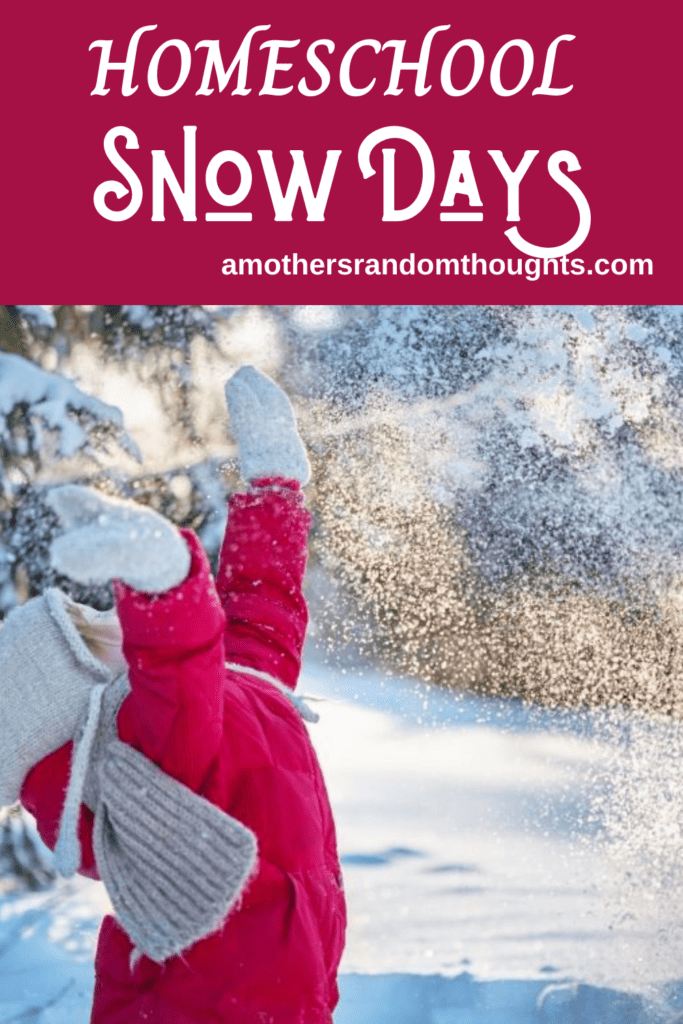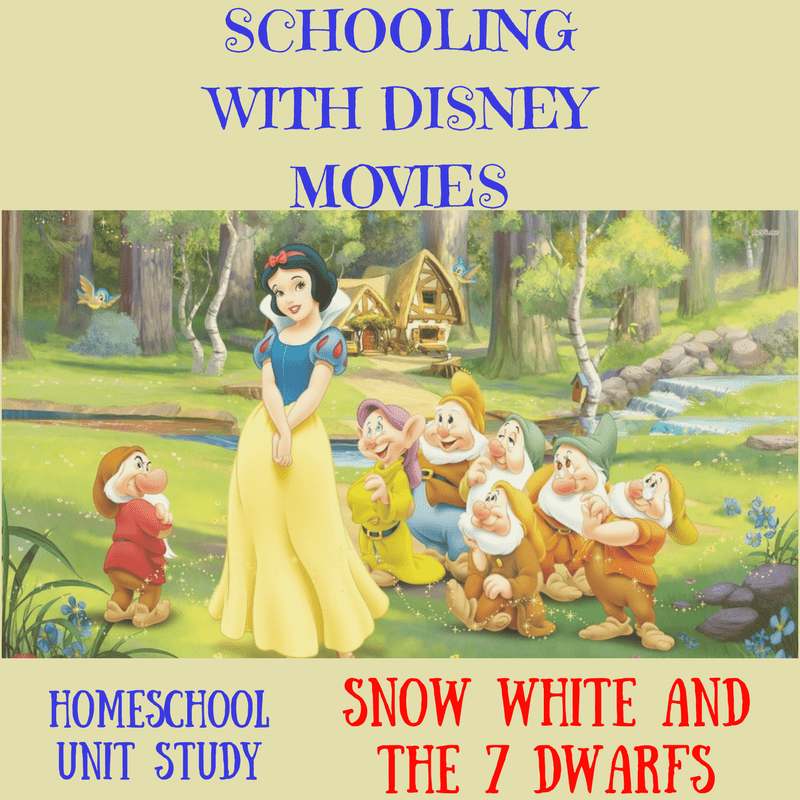Introduction: The Magic of Snow Days
Snow days can be a magical time for children, transforming familiar landscapes into a winter wonderland ripe for exploration. The inclement weather can also provide multiple engaging learning opportunities for homeschooled kids. Make the most of homeschool snow days by homeschooling instead of taking the day off like most public schools.
Imagine if, instead of viewing traditional snow days as an unexpected break from education, we saw them as a golden opportunity for learning sprinkled like snowflakes around our homes. As a homeschooling advocate, I’ve discovered that the swift transition from the routine to the exciting, hands-on learning experiences a snowy landscape offers can be a great way to have fun and learn. Whether it’s delving into the science of snow, understanding states of matter, or exploring the crystalline structure of each snowflake, the possibilities are endless. Add some fun with snow painting, encourage physical education with snow-based activities, or embark on a winter scavenger hunt, and you’ve turned a simple snow day into an enriching educational adventure.
Key Takeaways:
- Snow days offer a unique opportunity to transform traditional homeschooling routines into exciting, hands-on learning experiences.
- Educational activities surrounding the science of snow, such as studying states of matter and crystalline structures, provide engaging ways to learn outside the textbook.
- Experiential learning opportunities like snow painting, physical education in the snow, and winter scavenger hunts enrich children’s understanding and appreciation for a winter day.

Digging Into the Science of Snow on a Homeschool Snow Day
Winter weather offers an excellent opportunity for children to explore various scientific concepts right in our backyard. After a snow storm, your kids will want to participate in outdoor activities during those long winter months. Some fun science lessons to try include:
Exploring States of Matter
Imagine stepping outside into a winter wonderland with your kids, ready to dive into the day’s homeschooling lesson. Today’s topic? The fascinating transition between states of matter, demonstrated beautifully by the snow under our boots. I always find this topic to be a perfect blend of science and magic, making it an ideal lesson for a snowy day. We talk about how water, usually flowing and formless, freezes into the solid crystals we call snow. Then, we watch in awe as it melts back into water, completing the cycle by evaporating into the air. It’s a simple yet profound experiment that encapsulates the concepts of freezing, melting, and evaporation, sparking curiosity and wonder in the hearts of my little learners.
Observing Crystalline Structure
Snow provides a tangible way to explain the concept of states of matter. You can discuss how water changes from a liquid to a solid state when it freezes into snow and then back into water when it melts. Exploring states of matter with snow can enhance your children’s understanding of freezing, melting, and evaporation.
Each snowflake is unique and different like our fingerprints. As we collect these frozen wonders, our discussion naturally drifts to their formation, the stunning variety stemming from water molecules bonding in cold air. It’s in these moments, magnifying glass in hand, that the worlds of biology, ecology, and physics blend seamlessly. We’re not just observing; we’re connecting with the thrilling intricacies of nature and nurturing a deep appreciation for the splendid dance of creation that unfolds in each flake.
As a homeschooling mom, I delight in watching my kids see a snowflake up close and personal under a microscope or seeing the bigger snowflakes fall on black paper and examining them. This is winter homeschooling at its finest.
Conducting a Melting Experiment
Introduce your children to the concept of heat transfer with a snow-melting experiment. Gather equal amounts of snow in separate containers and place each container in different areas of the house—near a window, in a heated room, or in a cool, dark room. Have the children predict which will melt first and why and observe each container’s melting rate over time.
You can conduct a similar experiment with icicles, but make sure to use different-sized icicles. These fun activities will entertain and educate your children during cold weather. Furthermore your children won’t mind that the neighbors are out playing in the snow while local schools are closed.
Unleashing Creativity with Snow Painting
Let everyone’s creative juices flow by hosting a snow painting party! With some colorful spray bottles or powders, your kids can unleash their creativity on the untouched canvas of a snowy yard. They can practice writing, create abstract art, or even spray-paint a snowman! Snow painting promotes creativity and motor skills development and introduces the basics of color theory.
Snow painting is great after a big snow. Imagine transforming a plain, snow-covered yard into a vibrant canvas. As we delve into this activity, it becomes a thrilling opportunity to explore art and color theory in the most whimsical way possible. Picture us, armed with colorful spray bottles, powders, and even natural dyes, setting out to make our mark on this frosty blank slate. It’s not just about splashing color; it’s about understanding how different colors blend, contrast, and enhance each other.
This isn’t your typical art class—it’s an educational activity that marries creativity with the science of color theory, all while encouraging us to brave the cold and engage in physical education. So, let’s grab those spray bottles and let our creative spirits soar, painting our snow-covered world with vibrant hues and patterns. It’s an inventive way to make learning opportunities out of seasonal wonders, turning a simple snow day into an unforgettable experiential learning adventure.
This is an activity for the whole family. Additionally, it is also fun to invite other homeschooling friends to participate with you. Make sure to have plenty of bottles on hand for everyone!
Snow-Filled Physical Education
Imagine a winter wonderland right in our backyard, transforming the mundane into an extraordinary gym class. Sledding down snowy hills, we learn about gravity, but also about courage as we race the wind. It’s not just fun; it’s a lesson in physics, daring, and laughter. Then, there’s the serious business of building snowmen and snow forts, which is essentially an introductory class in architecture and engineering, demanding creativity and physical effort in equal measure. These activities don’t just tire us out; they teach us about balance, design, and teamwork.

And let’s not forget the epic snowball fights, a test of strategy, agility, and arm strength. It’s during these moments, bundled up on cold days, that we learn the essence of sportsmanship and the joy of competition. Here, every throw and dodge enhances our motor skills and strategic thinking. This is the essence of snow-filled physical education – where every snowflake contributes to our learning and growth.
Embarking on a Winter Scavenger Hunt
Who doesn’t love a good field trip, even if it is in your own backyard? The best thing about scavenger hunts is that young children can participate, and older students still love them.
Winter wonderlands bring to life a unique ecosystem, presenting an exclusive display of flora and fauna that thrive in the cold. From the resilient evergreen trees blanketed in white to the sprightly wildlife leaving intriguing tracks in the snow, winter provides a distinct spectacle of nature’s adaptability and endurance. Organizing a winter nature scavenger hunt identifying different types of trees, animal tracks, pinecones, and frozen leaves can serve as a practical lesson in biology and ecology while instilling a love for nature.
The hunt is simple but profoundly educational. This scavenger hunt isn’t merely a game; it’s an immersive learning opportunity, where every discovery enhances our understanding of the natural world’s complex, beautiful mechanisms.
Wrapping Up with Cups of Hot Cocoa: Reflecting on the Day’s Adventures
As we sit back, cradling warm mugs of hot chocolate in our hands, I can’t help but marvel at the adventures today’s snow day has brought us. Snow days, often seen as a disruptor of routine, unfolded as a canvas of endless possibilities, transforming our home learning experience into a realm of discovery and fun.
Snow days are not just about frolicking in the snow. They can be a deep dive into hands-on, experiential learning. We unearthed the science of snow, from the mysteries of states of matter to the unique crystalline structure of snowflakes, each lesson a doorway to curiosity and wonder. The backyard is a laboratory where melting experiments are conducted, heat transfer is explored, and hypotheses are brought to life.
However, don’t let the wintery education end there. Take another day or two to explore wintery art, read some favorite snow day books, and watch a few snowy movies!
Wintery Art
When you come inside and have warmed your hands and feet, this is the perfect time to make paper snowflakes or create wintery watercolor pictures. Other fun art ideas include snowman craft with cotton balls. Use navy blue or black paper and your snowman art will really pop. This is also a great time to use up those art supplies that sit all year round such as the white crayons, or the white paper punch circles (perfect snow).
Favorite Snow Day Books and Movies
One of my favorite snow day books for homeschool snow days is The Snowy Day by Ezra Jack Keats. This is such a good book. While it is over 60 years old, it is still timeless. This book tells the wonderful story of a little boy on a snow day.
Read The Snow Queen and then watch Frozen. Compare the book and the movie.
Cuddle up on the couch and watch snowy movies such as Groundhog Day, Frozen, Cool Runnings, Happy Feet, or Ice Age.
In conclusion, these moments of joy, learning, and wonder are the essence of homeschooling, showing us that education can be as engaging and diverse as the world around us. Let’s jot down today’s discoveries, not just in our notebooks but in our hearts, ensuring these memories of laughter and learning stay with us forever. What a beautiful reminder that every snowflake, like every day, holds the potential for enchantment and knowledge.
Do you know when the bad weather prevents you from going outside? Is it too cold outside to go play? Check out this post to find out.


Reviewing movies for parents from a Christian perspective since 2005. Know Before You Go!
Christian Homeschooling mom – 30 years and counting
Autism Mom & Disney enthusiast
